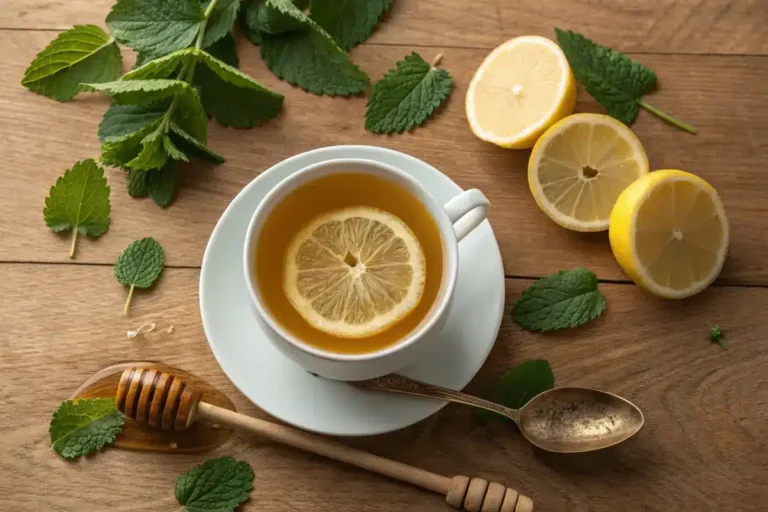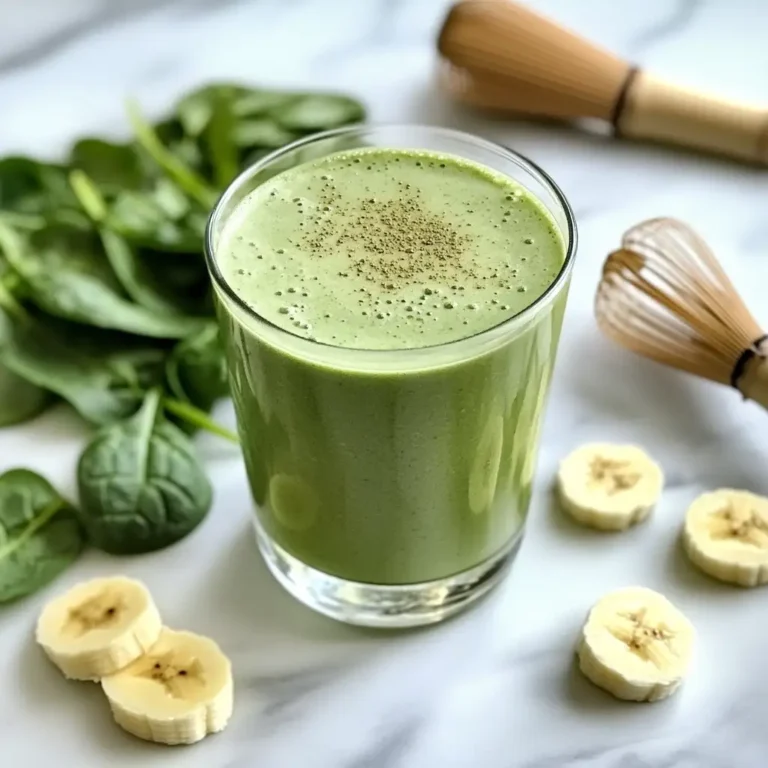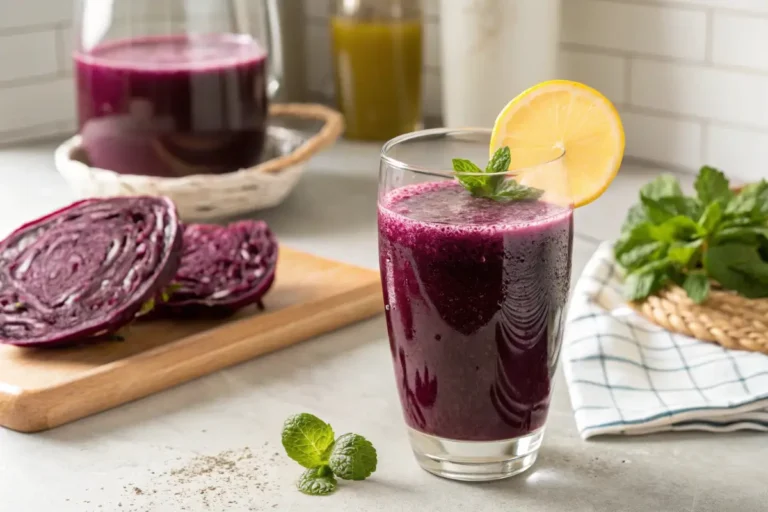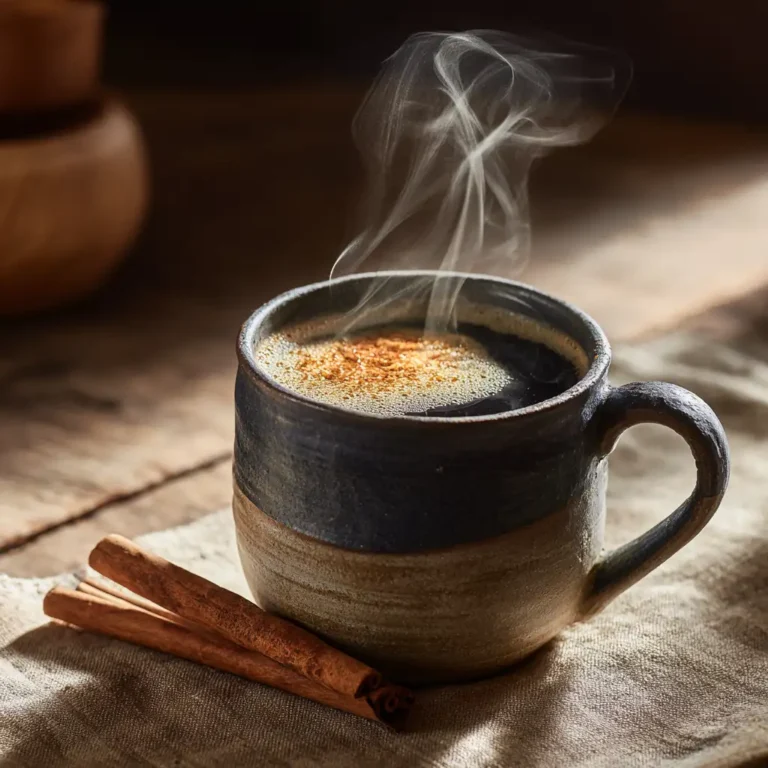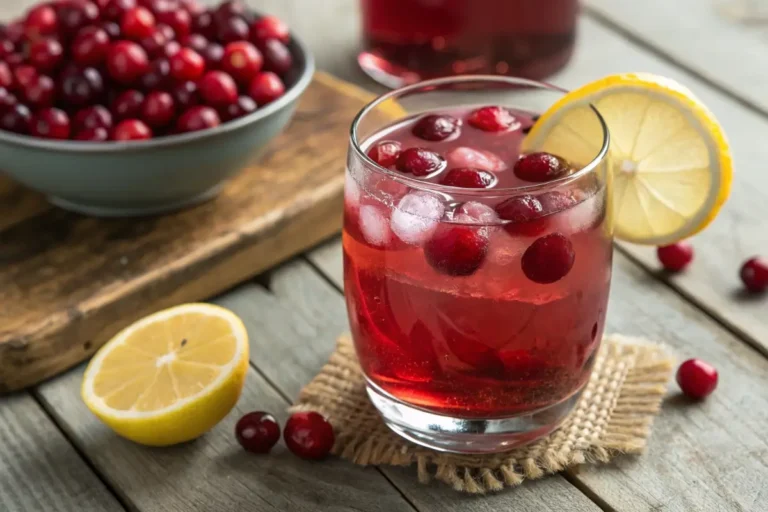What Does Butterfly Pea Flower Tea Good For? Benefits, Myths & Side Effects
Butterfly pea flower tea is more than just a stunning blue drink. It’s gaining attention in wellness circles for potential health benefits like better skin, improved focus, and digestion support. But what does butterfly pea flower tea good for, really? In this article, we uncover the facts behind the vibrant hue, its uses, and the truth about its impact on your body. You’ll learn about its origins, real health advantages, potential risks, and the best ways to include it in your routine—all based on trustworthy sources and science-backed data.
Table of Contents
PART 1: Understanding What Butterfly Pea Flower Tea Is
What is butterfly pea flower tea made from?
Butterfly pea flower tea is made using dried petals of the Clitoria ternatea plant, a vibrant blue flower native to Southeast Asia. When steeped in hot water, these petals release a natural indigo pigment rich in anthocyanins—plant-based antioxidants that help fight free radicals. This tea is caffeine-free, which makes it a good choice for those seeking a soothing drink at any time of day.
It has a mild, earthy taste with floral notes, making it suitable for both hot and iced versions. Many enjoy adding lemon juice, which transforms the tea from blue to purple due to a pH reaction. It’s also used in mocktails, desserts, and health tonics. Want a closer look? See Butterfly Pea Flowers and this green tea drink recipe.
Where does butterfly pea tea come from?
This tea has a long history in traditional Southeast Asian medicine. In Thailand, it’s known as “nam dok anchan” and served with honey and lime. People once drank it to refresh the mind, support mental clarity, and cool the body. Ayurvedic practices also used the flower to support memory and brain function. The flower’s unique color made it popular in ceremonial drinks and natural remedies. Over time, butterfly pea flower tea became a symbol of healing and calm. With renewed interest in herbal wellness, it’s now a global trend in natural health. Cultures that once used it as folk medicine now share its benefits with the world, backed by new research and nutrition awareness.
PART 2: Health Benefits of Butterfly Pea Flower Tea
What are the top wellness benefits?
If you’re wondering what does butterfly pea flower tea good for, the answer starts with its antioxidants. This herbal drink is rich in anthocyanins, which support mental clarity, vision health, and overall wellness. One of the main butterfly pea tea benefits is its ability to fight free radicals, which cause cell aging. Many drink it to boost memory and focus, especially during high-stress days.
Some also report improved mood and better sleep when consuming the tea regularly. It’s a gentle, caffeine-free drink that helps hydrate and restore balance. The vibrant color is just a bonus. Try pairing it with lemon or mint for extra effect. For more plant-based detox ideas, see this cranberry vinegar recipe or the Japanese Mounjaro detox drink.
Is butterfly pea tea good for skin and hair?
Another reason people ask what does butterfly pea flower tea good for is its effect on skin and hair. The tea’s powerful antioxidants may protect your skin from oxidative stress, one of the leading causes of wrinkles, dull tone, and dryness. Over time, regular use may improve skin texture and clarity. Some believe the tea supports hair growth by improving circulation and scalp health. While results vary, many include butterfly pea flower tea in their beauty routines for its natural benefits. It’s not just hype—the antioxidants are real, and they work gently over time. Add it to smoothies or enjoy it chilled with fruit. It’s a simple way to drink something that supports both inner and outer wellness.
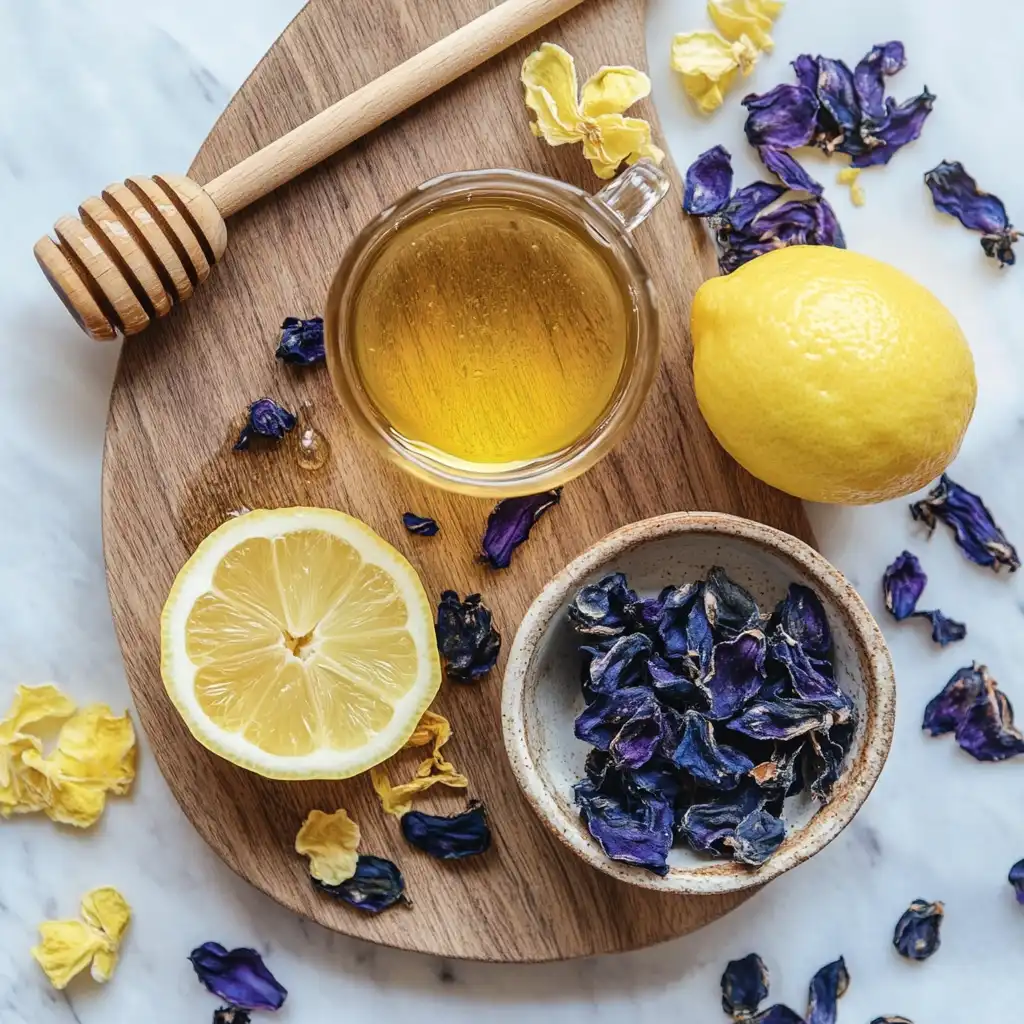
Does Butterfly Pea Tea Burn Fat or Aid Weight Loss?
How does it affect metabolism and digestion?
Many people asking what does butterfly pea flower tea good for are curious about its effect on weight. Butterfly pea tea isn’t a fat-burning miracle, but it may support your metabolism in a few helpful ways. This herbal tea acts as a natural diuretic, helping reduce water retention and occasional bloating. It also supports digestion by stimulating enzymes that break down food. While there’s no caffeine, the antioxidant content may increase fat metabolism slightly when paired with a clean diet.
When consumed cold with lemon or apple cider vinegar, it becomes a refreshing digestive tonic. Drinking it before meals may help you feel fuller and more hydrated. Interested in lemon-based teas? Try this lemon balm drink or this weight loss lemon blend.
Can it support weight management goals?
Butterfly pea flower tea alone won’t burn fat, but it can support healthy weight goals. It’s low in calories, caffeine-free, and full of antioxidants that fight stress—a common trigger for overeating. The tea’s mild flavor and satisfying color can replace sugary beverages in your routine. Drinking it regularly helps improve hydration, which naturally supports metabolism and energy levels.
Some users also notice better digestion, especially when pairing it with light meals or using it between meals. Adding a squeeze of lemon increases the tea’s detox-like effects. If you’re working on portion control or cutting back on sugary drinks, butterfly pea tea is a smart option. So, if you’ve ever asked what does butterfly pea flower tea good for, weight support is one realistic answer.
PART 4: Is Butterfly Pea Tea a Detox or Laxative?
Does butterfly pea tea help flush out toxins?
Many who wonder what does butterfly pea flower tea good for ask whether it works as a detox. While it’s not a medical detoxifier, butterfly pea tea does support your body’s natural cleansing processes. It contains flavonoids and anthocyanins that may promote healthy liver function. The tea also acts as a mild diuretic, which encourages the body to release excess fluids and sodium. When combined with lemon or consumed on an empty stomach, the drink becomes more effective at reducing water weight. It’s a gentle herbal option, not a harsh detox blend. For a stronger detox approach, you can pair it with something like this natural Mounjaro drink or try a matcha green tea smoothie for added benefits.
Can it act as a natural laxative?
One concern about butterfly pea tea is whether it causes unwanted laxative effects. In reality, this tea does not act like a stimulant laxative. Instead, it supports digestion in a mild and natural way. If you’re asking what does butterfly pea flower tea good for, you might appreciate that it may reduce occasional constipation by helping you stay hydrated. It also supports enzyme production, which can make digestion smoother. That said, overconsumption may cause mild stomach upset in sensitive individuals. Stick to one or two cups a day and observe how your body responds. It’s best used as part of a balanced wellness plan—not as a primary method for digestive relief.
PART 5: How to Drink Butterfly Pea Tea Safely
What’s the right amount to drink daily?
If you’re wondering what does butterfly pea flower tea good for, it’s important to also ask how much is safe. In general, most people can enjoy 1 to 2 cups per day without issues. This amount supports hydration, antioxidant intake, and general wellness without overloading the system. Drinking more than this may cause minor digestive upset in sensitive individuals. To keep it balanced, start with one cup and monitor how your body reacts. Some people enjoy it in the morning for its calming properties, while others prefer it chilled during the afternoon. You can also blend it with fruits for variety. Try this raspberry green tea smoothie or make your own colorful dessert using matcha white chocolate mochi cake.
What happens if you drink too much?
While butterfly pea tea side effects are rare, they can happen with overuse. Drinking too much may lead to nausea, stomach cramps, or dizziness, especially if consumed in large quantities without food. If you’re taking medications, consult your doctor—especially if you’re on blood thinners or hormone therapies. The tea may mildly affect estrogen levels or slow blood clotting. If you’re asking what does butterfly pea flower tea good for, remember: moderation is key. Children and pregnant women should avoid it unless cleared by a healthcare provider. Stick to herbal serving guidelines, and don’t replace meals or water with tea alone. Used properly, butterfly pea tea can be a relaxing part of your day with minimal risk.
PART 6: Creative Ways to Prepare Butterfly Pea Tea
How to make hot and cold versions
If you’re still asking what does butterfly pea flower tea good for, preparation method matters. Making it is simple. For hot tea, boil one cup of water and steep 5–6 dried butterfly pea flowers for 5–7 minutes. The result is a deep blue drink with earthy tones. Add a splash of lemon, and the color changes to bright purple. For iced tea, brew it the same way and chill over ice. Many people mix it with honey, mint, or even cucumber slices for added flavor. You can also create sparkling tea using soda water or tonic. Want to combine flavors? Try it alongside this apple cider vinegar guide or pair it with this soothing crystallized ginger lemon tea.
What can you mix butterfly pea tea with?
One reason butterfly pea tea recipes are so popular is because it blends beautifully with other ingredients. If you’re still curious what does butterfly pea flower tea good for, the flavor pairings make it incredibly versatile. Add citrus fruits like lemon, lime, or orange to enhance flavor and trigger the tea’s color change. You can also mix in herbs like basil or rosemary for an herbal twist. Blend it into smoothies, lemonade, or make popsicles for hot days. For a sweet treat, try making jelly or ice cubes with the tea and add them to sparkling water. People also love it in mocktails at parties because it creates vibrant, eye-catching drinks. The options are endless and totally Instagram-worthy.
PART 7: Who Should Avoid Butterfly Pea Tea?
Are there any known side effects?
Although many ask what does butterfly pea flower tea good for, it’s just as important to know its limits. Most people tolerate it well, but some experience minor side effects. These include nausea, dizziness, or upset stomach when taken in large quantities. The tea has a mild effect on hormones, so those with estrogen-sensitive conditions should use caution.
Butterfly pea tea may also slow blood clotting, making it risky before surgery or for those taking anticoagulants. If you’re pregnant or nursing, it’s best to avoid the tea unless approved by your healthcare provider. It’s always smart to start with a small amount and assess your reaction. For healthier tea options, try this energy drink alternative guide or check out this green coffee keto recipe.
Can children or seniors drink it?
Many people wonder what does butterfly pea flower tea good for when considering it for family members. While adults may enjoy it daily, children and seniors should approach it more cautiously. There’s limited research on how butterfly pea tea affects kids or the elderly. Because it may alter hormone activity or slow blood clotting, it’s best to avoid giving it to young children or older adults with medical conditions. Always consult a doctor if someone has ongoing treatments, takes prescription drugs, or has chronic issues like blood pressure or hormone imbalance. For those with a clean bill of health, a small serving every few days may be acceptable. Still, butterfly pea tea should not replace water or regular meals.
PART 8: When and How to Add Butterfly Pea Tea to Your Wellness Routine
Best time of day to drink butterfly pea tea
If you’re asking what does butterfly pea flower tea good for, knowing when to drink it makes a big difference. Many people enjoy butterfly pea tea in the morning or afternoon for calm focus without caffeine. Drinking it first thing may help hydrate and support digestion. In the afternoon, it can replace soda or sugary drinks. Because it’s caffeine-free, it won’t interfere with sleep—but if you’re sensitive, try avoiding it too close to bedtime, especially with lemon added. The tea pairs well with light snacks, fruit, or even before yoga or meditation. For structured routines, try this fucoxanthin-rich recipe or the pink salt tea blend for weight loss to boost your daily wellness habits.
Is it okay to drink butterfly pea tea every day?
Many people include it in their routine and still wonder, what does butterfly pea flower tea good for if taken daily. Drinking 1–2 cups per day is considered safe for most healthy adults. It hydrates, supports antioxidant intake, and replaces less healthy beverage choices. Rotate it with other herbal teas to avoid overexposure to specific plant compounds.
If using for wellness, pair it with nutrient-dense meals rather than relying on tea alone. For maximum benefit, brew it fresh and avoid sweeteners or packaged mixes. The key is consistency, not excess. As with any herbal remedy, listen to your body. If you notice discomfort, reduce or pause intake. When used thoughtfully, butterfly pea tea is a flavorful way to support your wellness goals.
FAQ: What Does Butterfly Pea Flower Tea Good For?
Does butterfly pea tea burn fat?
Does butterfly pea tea clear skin?
What are the benefits of drinking butterfly pea tea?
Can I drink butterfly pea tea every day?
What are the disadvantages of butterfly pea tea?
Is butterfly pea a laxative?
Is butterfly pea tea a detox?
Conclusion
If you’ve ever asked what does butterfly pea flower tea good for, now you know—it’s more than just a pretty drink. This herbal tea can gently support your mind, digestion, skin, and even your mood. Its natural antioxidants make it a smart addition to your wellness routine, especially when consumed moderately. Whether you enjoy it hot, iced, or with lemon, it’s a safe, caffeine-free option worth trying. Just remember: consistency matters more than quantity.
You can also explore visual ideas and creative recipes about what does butterfly pea flower tea good for on our Pinterest board or join the conversation on our Facebook page.

